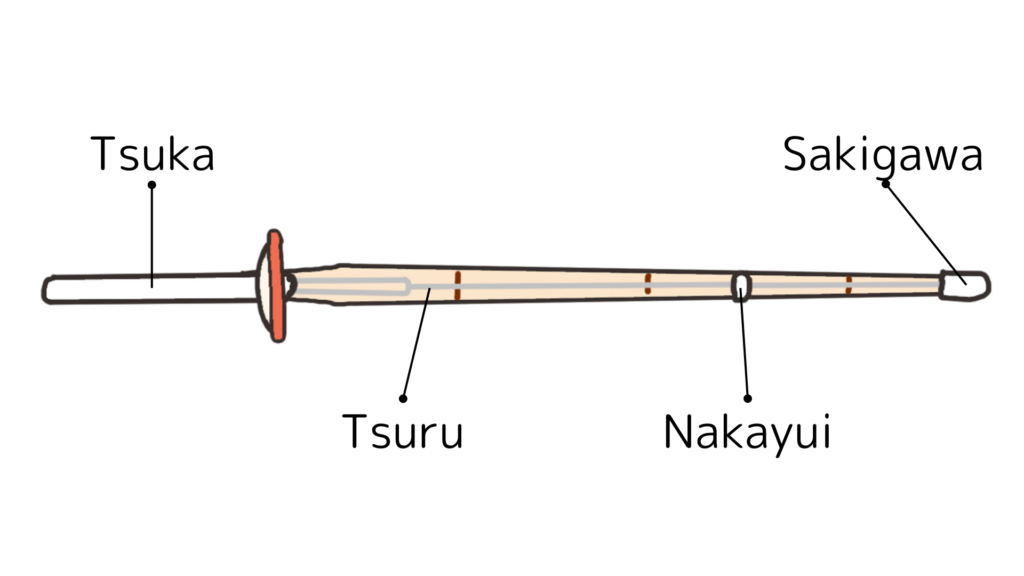Understanding the Shinai in Kendo
Kendo, the traditional Japanese martial art of swordsmanship, employs the use of a bamboo sword known as a shinai. This article will delve into the key aspects of the shinai, its construction, usage, and maintenance, emphasizing the essential points that every practitioner and enthusiast should understand.
目次
Construction of the Shinai

The shinai is crafted from four bamboo slats, bound together with leather fittings. The key components of the shinai include:
- Tsuka (Handle): Wrapped with leather, providing a grip for the user.
- Sakigawa (Tip Leather): Covers the end of the shinai.
- Nakayui (Middle Leather): A leather tie positioned about one-third down from the tip, ensuring the bamboo slats remain aligned.
- Tsuru (String): Represents the back of the blade and helps maintain the shinai’s structural integrity.
Each part plays a vital role in mimicking the weight and balance of a real katana, making the shinai a safe yet effective tool for training.
Usage in Practice
Kendo practitioners use the shinai in various forms of practice, including:
- Suburi (Swinging Practice): Repetitive swinging of the shinai to build strength and technique.
- Kata (Forms): Pre-arranged movements that simulate combat scenarios.
- Shiai (Matches): Competitive bouts where two kendoka (Kendo practitioners) face off.
Proper handling of the shinai is crucial. Practitioners must grip the tsuka correctly, ensuring a relaxed but firm hold to facilitate smooth and accurate strikes.
Maintenance of the Shinai
Regular maintenance of the shinai is essential to ensure safety and longevity. Key maintenance practices include:
- Inspection: Regularly checking for cracks or splinters in the bamboo slats.
- Sanding: Smoothing out any rough edges to prevent injuries.
- Oiling: Applying oil to keep the bamboo flexible and prevent it from drying out.
- Tightening Fittings: Ensuring the leather parts and tsuru are securely fastened.
The Significance of the Shinai
The shinai is more than just a training tool; it is symbolic of the practitioner’s dedication to the way of the sword. Mastery of the shinai reflects a deeper understanding of Kendo’s principles, such as respect, discipline, and self-improvement.
In conclusion, the shinai’s construction, proper usage, and diligent maintenance are fundamental aspects that every kendoka must prioritize. By paying attention to these details, practitioners can enhance their training experience and uphold the traditions of Kendo.
Key Takeaways
- Construction: Understanding the parts of the shinai is essential for effective use and maintenance.
- Usage: Proper handling techniques ensure safety and improve skill.
- Maintenance: Regular care of the shinai prevents injuries and prolongs its life.
By focusing on these critical areas, Kendo practitioners can cultivate their skills and honor the art’s rich heritage.
本記事はプロモーションを含みます。
